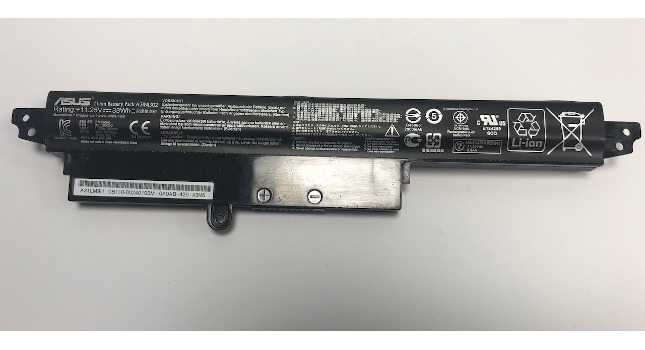Last month, we looked beyond the rhetorical statements about aligning an organization around goals and looked at why it is important to have a common strategy. In summary, the actions you might consider are: Let’s take a look at each of these: Communicate a common strategy If we are to align the organization to a common strategy and set of goals, then we must actually have a clear strat...
Last month, we looked beyond the rhetorical statements about aligning an organization around goals and looked at why it is important to have a common strategy.
In summary, the actions you might consider are:
Communicate a common strategy with common goals and respective roles
View safety and manufacturing excellence as an integrated process
Foster a partnership for manufacturing excellence between production and maintenance
Pause and reflect regularly
Establish a manufacturing excellence forum
Engage the shop floor in improving productivity
Develop a set of questions for executives to ask when visiting plants to reinforce these principles
Let’s take a look at each of these:
Communicate a common strategy
If we are to align the organization to a common strategy and set of goals, then we must actually have a clear strategy and set of goals. I believe there should be an overarching superordinate goal that embodies our overall objective. A word of caution here is that the superordinate goal must be believable, and achievable in a definitive time frame, even if that time period is several years. Otherwise it lacks credibility and can actually be a de-motivator.
Further, the leadership must constantly communicate, reinforce, reward, and then communicate again and again the strategy and goals, until they become embedded into the culture of the organization.
Integrate safety and management
Most organizations emphasize safety performance. And yet, their emphasis on manufacturing excellence is, to be kind, less than emphatic. Studies have demonstrated clearly that safety and manufacturing excellence go hand in hand.
The more reliable and disciplined you are about operating your plant, the safer you’ll be. In part this is because the plant “falls over” less frequently, requiring less intervention and the risk of injury. In addition, plant discipline improves across all areas — operating, maintenance, and safety practices. If safety is not an option, then manufacturing excellence and best practice should not be an option either. They go hand in hand.
A good news note for those of you who have been through a long, successful, safety improvement effort: you can use the same managerial steps that you used to improve safety performance to improve manufacturing performance. You have a model to use.
A partnership for manufacturing excellence
The relationship between production and maintenance is often strained. A common refrain from operations in many manufacturing plants is “we break ’em, you fix ’em,” or from maintenance vice versa — “you break ’em, we fix ‘’em.”
A partnership agreement should be developed and documented which defines the relationship in general terms, and provides measures that demonstrate the partnership is working. Indeed, production and maintenance should share several common measures, for the partnership to be meaningful and lasting.
For example, having production and maintenance responsible for measures such as downtime, maintenance costs, and PM compliance would give a new perspective to production on these measures.
Studies have shown that most equipment downtime is induced by poor operating practice, so not having production responsible for these key measures would simply be wrong. Conversely, having maintenance responsible for on-time-delivery would give them a new perspective on working with production to keep the equipment running.
Other actions that we might take include linking various groups to common goals and measures.
Pause and reflect regularly
The management team should have at least one “away day” per quarter to review the strategy, progress, successes, failures, etc. Pausing to reflect, analyze, and modify your plans is part of the ongoing process of learning and improving.
These “away days” are opportune times to present best practices, recognize achievements, and remove potential roadblocks. Pausing to informally reflect, analyze, and improve, on a daily basis, from the boardroom to the lunch room, is essential.
Establish a manufacturing excellence forum
This forum is typically a diagonal slice of the organization from the plant manager to the shop floor. It is both cross functional and multi-layered, but should not be more than 10 people.
Its primary goal is to communicate best practice across management layers and group boundaries, and to identify any obstacles to their implementation. Member should be rotated about once per year to keep improvement ideas fresh.
Engage the shop floor in improving productivity
Nothing changes until the shop floor does things differently (better). The shop floor people know more about the details of how things actually work on the floor than anyone else.
So, we must capture and apply the tacit knowledge they possess to improve. When on the shop floor, managers should share key metrics with people about cost, safety, training, reliability and productivity.
A word loosely used for engaging people in the improvement process is empowerment, about which a friend of mine once remarked “We tried empowerment once, and what we got was dumb decisions faster.” Maybe they didn’t have the right process for effective empowerment.
We can begin our empowerment efforts by having a process for routine structured improvement time for cross-functional teams.
Get the executives involved
The importance of executive leadership is paramount for achieving manufacturing excellence, and there are a number of issues here where many U.S. executives get poor marks.
One issue is getting executives to ask the right questions to better align the organization. These questions will vary from business to business, but should constantly reinforce our strategy and goals. What gets asked about usually gets done, so it’s critical that executives ask the right questions.
Peter Wickens, former managing director of Nissan-United Kingdom, and author of an excellent book, The Ascendant Organization, said that one of the most important things he did as managing director was to align the organization to a common strategy and set of goals.
I couldn’t agree more.
Author Information
Ron Moore is Managing Partner of The RM Group, Inc., Knoxville, TN, and author of Making Common Sense Common Practice: Models for Manufacturing Excellence, now in its third edition from Butterworth-Heinemann.
He holds a BSME, MSME and MBA. He can be reached at (865) 675-7647 or by e-mail at [email protected] .



